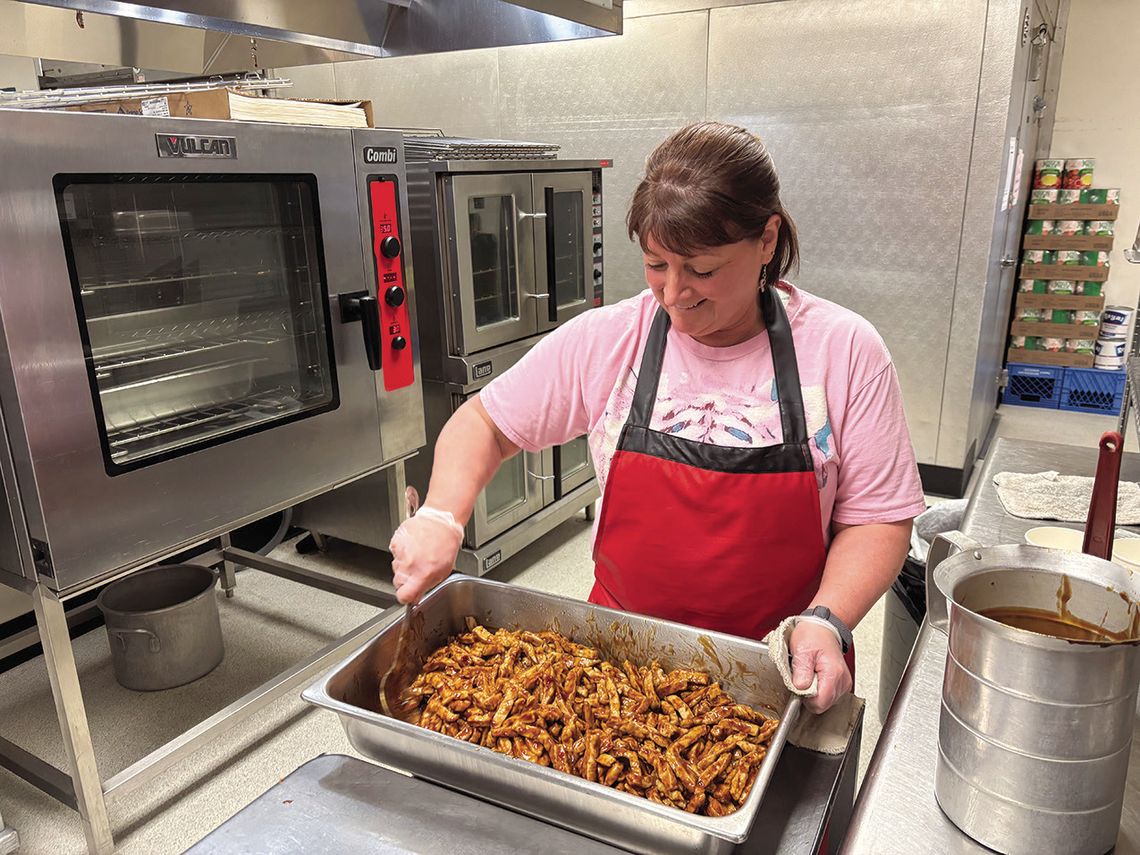How school meals are funded in your district
NEWPORT — Nowadays, breakfast and lunch in a kindergarten through 12th grade school setting is a common feature. For some, it’s a required staple.
According to the United States Department of Agriculture food and service data collected in 2024, over 95,000 schools and institutions serve school lunches to 29.6 million students each day, including 20.4 million free lunches.
Historically though, official school lunch programs in the United States haven’t reached 80 years old. The National School Lunch Program was established in 1946 by President Harry S. Truman to provide low-cost or free lunches to children.
The program has changed over the years, including the enactment of the Child Nutrition Act of 1966 that authorizes all child nutrition programs such as the School Breakfast Program, the National School Lunch Program, the Child and Adult Care Food Program and the Summer Food Service Program to ensure children from low-income households have access to healthy foods.
But how does that work in your school district?
For students to qualify for free or reduced lunches, school districts participate in the Community Eligibility Provision, a program run under the U.S. Department of Agriculture.
This is a non-pricing meal service option for schools and school districts in low-income areas. CEP allows the nation’s highest poverty schools and districts to serve breakfast and lunch at no cost to all enrolled students, without collecting household applications. Instead, schools that adopt CEP are reimbursed using a formula based on the percentage of students categorically eligible for free meals based on their participation in other specific means-tested programs, such as the Supplemental Nutrition Assistance Program and Temporary Assistance for Needy Families.
To paint a picture of how that looks in our communities, below is a summation of meal programs in the Pend Oreille River Valley’s four public school districts — Newport, Cusick, Selkirk and West Bonner County.
Cusick School District
The Cusick School District serves 192 students, kindergarten through 12th grade, free and reduced meals. The district offers breakfast and lunch, with breakfasts costing $1.80. Lunch for grades K-5th is $2.85 and $3.15 for grades 6–12, if those students do not qualify for free meals.
In school year 2023– 2024 the district received $15,701 in state revenue and $171,884 in federal revenue to provide free or reduced meals to students. The same year the district spent $24,000 of levy funds on meals for students, which equates to 1% of overall budgeted expenses, according to Heather Dauphin, director of business services for Cusick School District.
Newport School District
All students at Newport School District receive free breakfast and lunch under the Community Eligibility Program, according to Sheila Myrvang, director of nutrition services for NSD. The district also has two afternoon school programs that offer free snacks. NSD serves an average of 1,220 meals per day.
NSD has been enrolled in the Community Eligibility Program for three years and must renew their eligibility under the program after four years.
The district is reimbursed approximately $70,000 a month for meals. Levy funds provide $50,000 for kitchen equipment repair, maintenance and replacement.
“We follow the meal pattern requirements under the National School Lunch and Breakfast Programs,” Myrvang. “We use nutritional software to meet these standards.
These include calories, saturated fat, and sodium.
Also included is required grains, meat, meat alternatives, fruits, vegetables and at least two types of milk fats.”
Myrvang adds that for breakfast and lunch a student needs to take three items, and one must be a minimum of half a cup of fruits or vegetables.
“We have a salad bar at each school and offer fruit choices each day.”
NSD also uses non-fat chocolate milk and 1% white milk for all meals.
Next year chocolate will not be offered at breakfast to meet the new federal requirements for school meals, which also includes new guidelines on cereal and yogurts.
Selkirk School District
According to superintendent Nancy Lotze, 100% of the 263 Selkirk students in kindergarten through 12th grade eat free under the Community Eligibility Program. Selkirk serves breakfast and lunch to students.
In 2023–2024, Selkirk received $181,155 in federal reimbursement and about $40,000 in state reimbursements and competitive grants, leaving $60,000 in local levy funds. The total food service expenditures for 2023–2024 was $281,404.28.
As with all public schools, there are income guidelines that determine if a student is eligible to receive free or reduced meals. However, when a school building operates a food service program under the Community Eligibility Program, 100% of the students eat free. The school district is reimbursed at the free rate for a percentage of those meals based on a formula that varies by district. The remainder of the meals are reimbursed at the “reduced” rate. “However, for the past three years, the state legislature has backfilled the difference to equal 100% at the free reimbursement level,” Lotze says.
All school districts in the country are required to meet the same nutritional guidelines established by the Federal National School Lunch Program (NSLP).
West Bonner County School District
There are 342 approved free lunch applications and 97 approved reduced lunch applications for students in the school district, according to superintendent Kim Spacek.
The Idaho Department of Health and Welfare can approve applications for free breakfast and lunch through school districts if a student is in foster care, their family utilizes Supplemental Nutrition Assistance Program benefits or is on Medicaid.
From January 6–30 there were 143 free or reduced lunches served at Priest River Elementary, 53 at Idaho Hill Elementary, 20 at Priest Lake Elementary and 105 at Priest River Lamanna Junior/ Senior High.
A paid breakfast at West Bonner elementary schools costs $2.25 and $2.75 at the junior/senior high school. Reduced cost breakfast at all school sites is 30 cents. Lunch at elementary schools cost $3.75 and $4 at the junior/senior high school.
Reduced lunch costs 40 cents.
“Based on participation, the district received about $193,000 in reimbursement from the government for our food programs in the 2023–2024 school year,” Spacek says.
He said the district is required by the United States Department of Agriculture to serve nutritional meals to each student in order to participate in the National School Lunch Program and Breakfast Program.
Students that require special dietary needs must have a medical statement from their physician.
For more information about nutrition in your school district, go to www.newportgriz.com/ departments/nutrition for Newport, www.cusick. wednet.edu/nutrition for Cusick, www.selkirkschools. org/page/food-service for Selkirk and www. sd83.org/departments/ child_nutrition for West Bonner County.
SOPHIA MATTICE-ALDOUS IS A MURROW NEWS FELLOW WORKING DIRECTLY WITH NEWSROOMS AT RANGE MEDIA AND THE NEWPORT MINER NEWSPAPERS THROUGH A PROGRAM ADMINISTERED BY WASHINGTON STATE UNIVERSITY. HER REPORTING IS AVAILABLE FOR USE VIA CREATIVE COMMONS WITH CREDIT.
.png)







